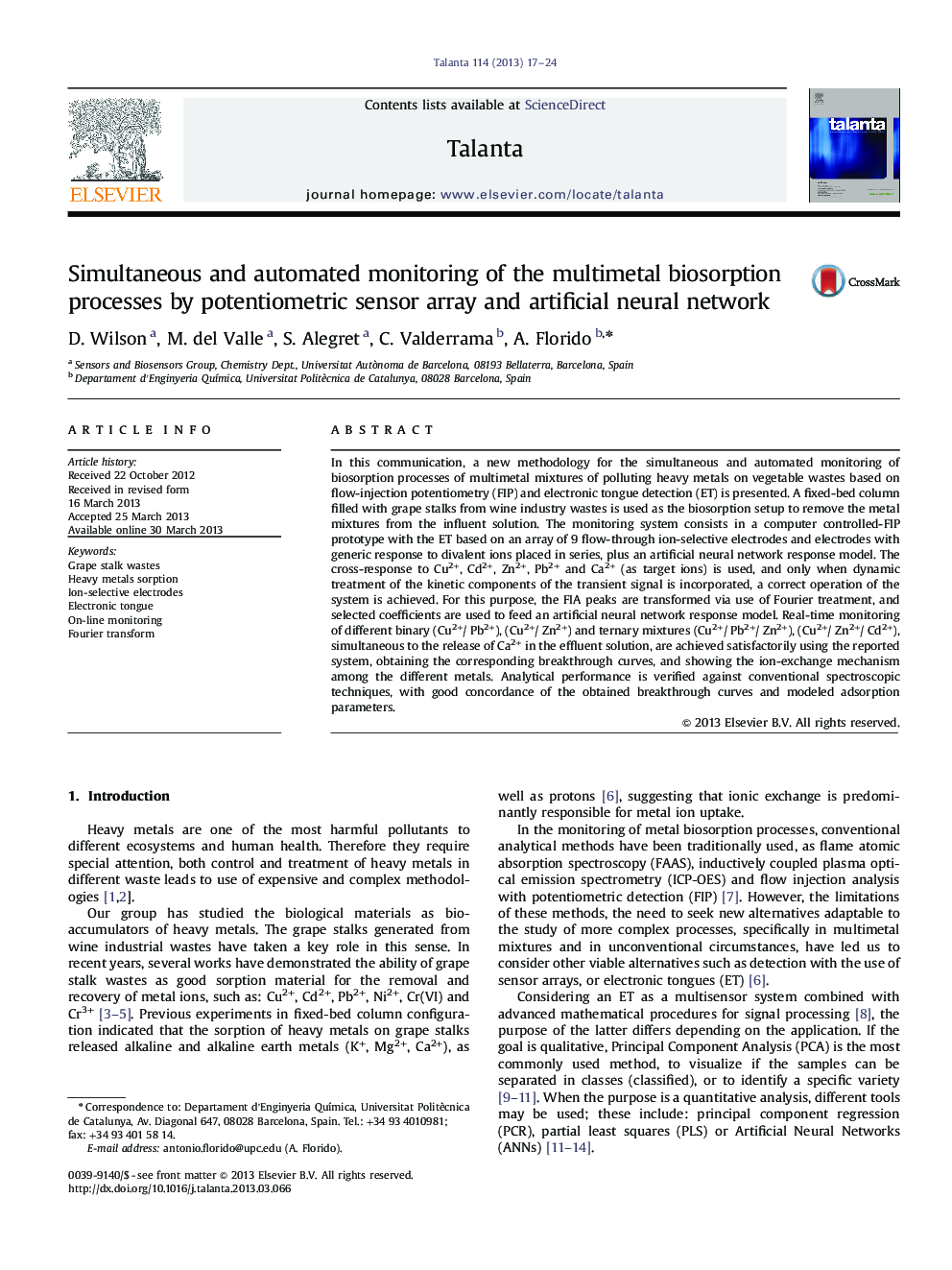| Article ID | Journal | Published Year | Pages | File Type |
|---|---|---|---|---|
| 7681538 | Talanta | 2013 | 8 Pages |
Abstract
In this communication, a new methodology for the simultaneous and automated monitoring of biosorption processes of multimetal mixtures of polluting heavy metals on vegetable wastes based on flow-injection potentiometry (FIP) and electronic tongue detection (ET) is presented. A fixed-bed column filled with grape stalks from wine industry wastes is used as the biosorption setup to remove the metal mixtures from the influent solution. The monitoring system consists in a computer controlled-FIP prototype with the ET based on an array of 9 flow-through ion-selective electrodes and electrodes with generic response to divalent ions placed in series, plus an artificial neural network response model. The cross-response to Cu2+, Cd2+, Zn2+, Pb2+ and Ca2+ (as target ions) is used, and only when dynamic treatment of the kinetic components of the transient signal is incorporated, a correct operation of the system is achieved. For this purpose, the FIA peaks are transformed via use of Fourier treatment, and selected coefficients are used to feed an artificial neural network response model. Real-time monitoring of different binary (Cu2+/ Pb2+), (Cu2+/ Zn2+) and ternary mixtures (Cu2+/ Pb2+/ Zn2+), (Cu2+/ Zn2+/ Cd2+), simultaneous to the release of Ca2+ in the effluent solution, are achieved satisfactorily using the reported system, obtaining the corresponding breakthrough curves, and showing the ion-exchange mechanism among the different metals. Analytical performance is verified against conventional spectroscopic techniques, with good concordance of the obtained breakthrough curves and modeled adsorption parameters.
Keywords
Related Topics
Physical Sciences and Engineering
Chemistry
Analytical Chemistry
Authors
D. Wilson, M. del Valle, S. Alegret, C. Valderrama, A. Florido,
